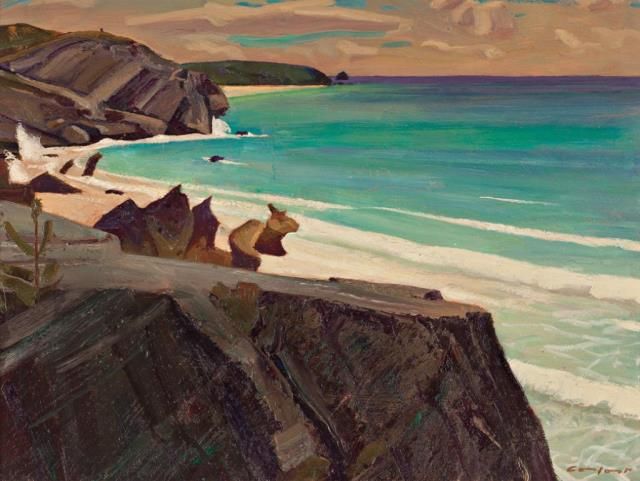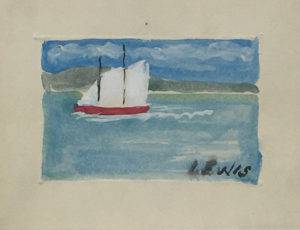Enjoy our collection of Charles Comfort paintings for sale, if you have any question or would like more detailed pictures please e-mail us at info@atlanticfineart.com. We are always looking to acquire Charles's work, if you're looking to sell any pieces please contact us at info@atlanticfineart.com.
Charles Comfort - We dont currently have any Comfort paintings, please check back.

Biography:
"As an artist he is a humanist realist whose paintings are characterized by a spirit of ordered freedom and technical conservatism. For him, the visible world is the valid point of departure for a work of art. This does not mean that his purpose is to imitate nature, but rather to recreate it, remoulding and harmonizing it to agree with his own idiomatic mannerisms and his own personal concepts. He envisages his world as being inexhaustibly inspiring and meaningful."
(Charles Comfort, writing about himself, 1974)
Charles Comfort was a commercial artist, landscape and portrait painter, printmaker, muralist, teacher and arts administrator. His watercolour and oil paintings include a number of very powerful, symbolic portraits, as well as ordered landscapes. Comfort held a strong belief in the importance of art in society; he played a significant role in Canada's War Art program and in the establishment of the Canada Council for the Arts.
Charles Comfort spent the first part of his career working primarily as a commercial artist. From the age of 14, he apprenticed at Brigdens Limited, Winnipeg, and took art classes at high school and the Winnipeg School of Art. He later studied at the New York Art Students League under Robert Henri and Euphrasius Tucker. With Brigdens, he was briefly transferred to Toronto in 1919. There, he joined the Arts and Letters Club, taking life classes and meeting members of the Group of Seven. The Group's inaugural 1920 exhibition had a profound impact on Comfort's landscape work.
Returning to Winnipeg, Comfort exhibited his watercolours for the first time in 1922, including in a two-man show at the Winnipeg Art Gallery. He took painting trips to the country and met LeMoine FitzGerald and W. J. Phillips. In 1925, he moved to Toronto, where he met Will Ogilvie and made his first serious attempts at oil painting. The 1927 exhibition of the Société Anonyme at the Art Gallery of Toronto left a strong impression on Comfort, who was especially inspired by Joseph Stella's futurist Brooklyn Bridge, among others. In 1932, he was commissioned to create his first of many murals, for Toronto's North American Life Building, and he later taught mural-painting at the Ontario College of Art. In 1933, he met the American Precisionist Charles Sheeler.
In 1936, Comfort obtained a studio next to that of A. Y. Jackson in the celebrated Studio Building. The same year, he was appointed Associate Professor at the University of Toronto to teach historical painting techniques, and later various studio courses; he remained there for 25 years. Comfort served as an official war artist in World War II, contributing an important body of work.
Louise (1927), a portrait of Comfort's wife, marks the artist's first major foray into portrait work. The highly simplified, precise forms of Tadoussac (1935) reveal the influence of Sheeler.
One of the organizers of the 1941 Kingston Conference, Comfort was a founding member of the Federation of Canadian Artists and contributed to the 1951 Massey Report, which lead to the founding of the Canada Council. He served on the Board of Directors and numerous committees at the Art Gallery of Toronto, and was Director of the National Gallery of Canada from 1959 until 1965. Comfort was a founding member of the Canadian Society of Graphic Art, Canadian Society of Painters in Water Colour, and Canadian Group of Painters, and held executive positions in a number of art organizations. He received an honorary doctorate from Mount Allison University in 1958, and was honoured with the Medaglio al Merito Culturale and Canadian Centennial Medal. He was appointed Officer of the Order of Canada in 1972.
Source: National Gallery of Canada
